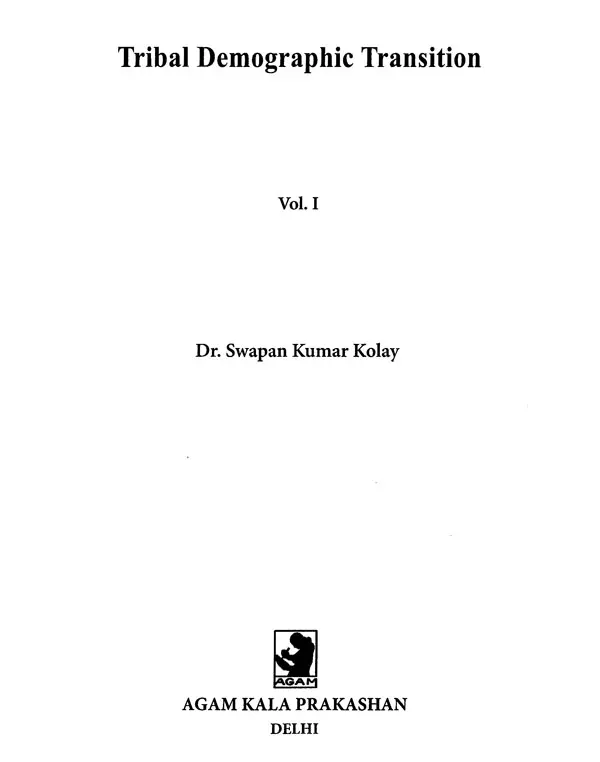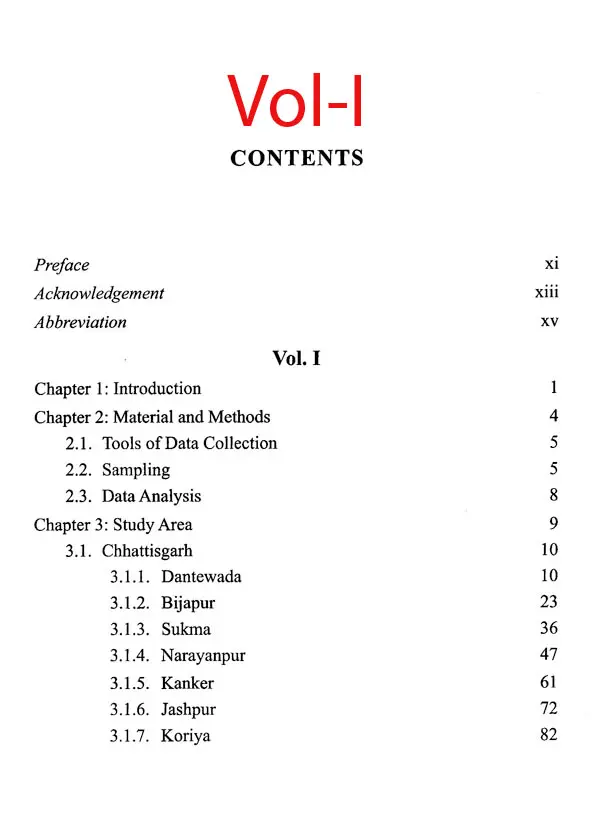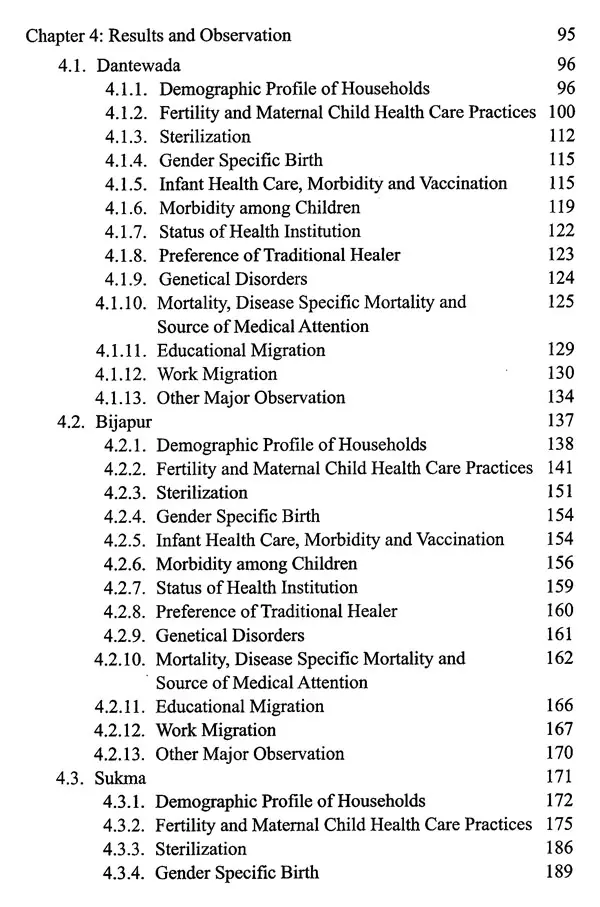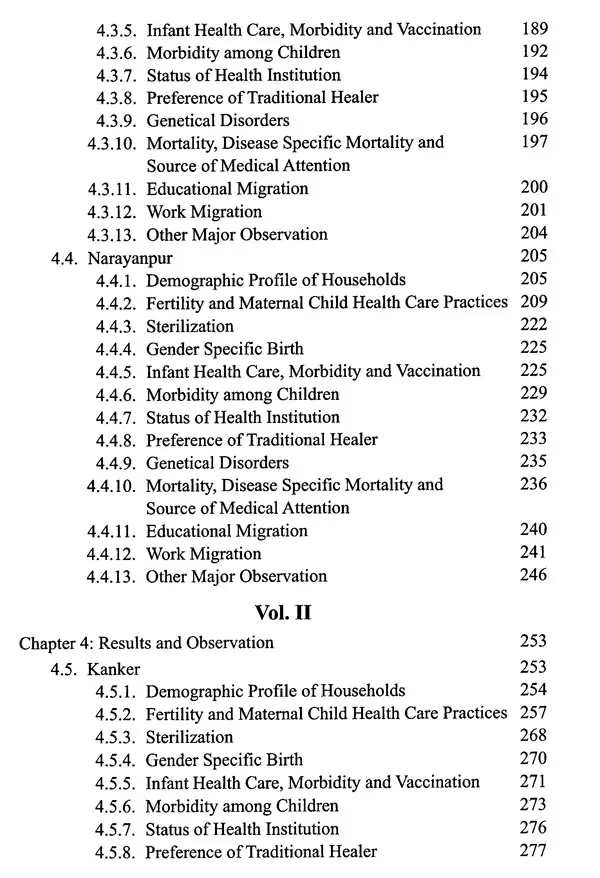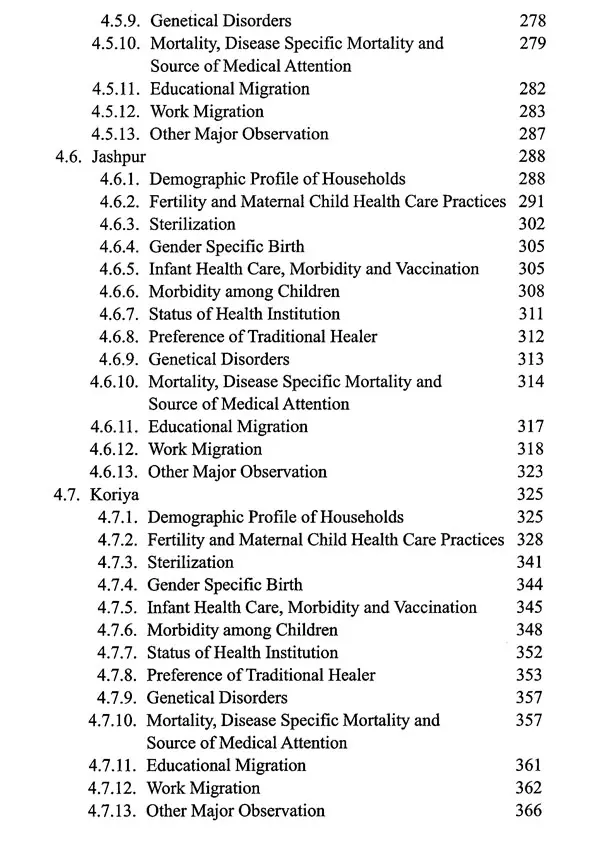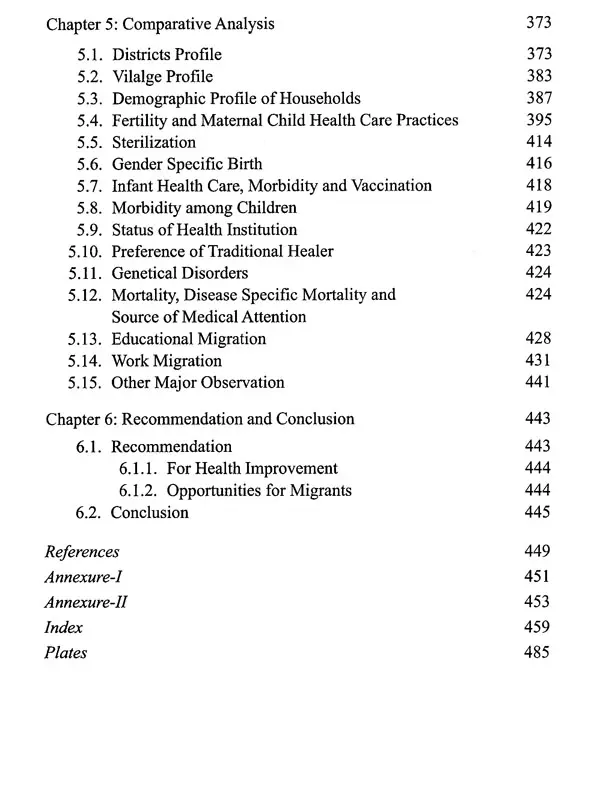
Tribal Demographic Transition (Set of 2 Volumes)
Book Specification
| Item Code: | UAM055 |
| Author: | Swapan Kumar Kolay |
| Publisher: | Agam Kala Prakashan, Delhi |
| Language: | English |
| Edition: | 2021 |
| ISBN: | 9788173201950 |
| Pages: | 508 (57 B/W Illustrations) |
| Cover: | HARDCOVER |
| Other Details | 9.50 X 6.50 inch |
| Weight | 1.17 kg |
Book Description
The book has been organized in seven districts and the analysis, result and discussion are elaborated within six Chapters where the Chapter I is about introduction, Chapter II is methodology, Chapter III describes demographic profile le of all districts and Chapter IV elaborates all the major factors which is responsible for population declining according to the selected districts. And the fundamental part of the research study is a comparison in Chapter V between all districts which provides detailed major fi ndings of the Dantewada, Bijapur, Sukma, Narayanpur, Kanker, Jashpur and Korea/Koriya districts. At last the VI Chapter can play a vital role by providing the recommendations which would be fruitful to policy level.
Dr. Swapan Kumar Kolay born in 1966 at Midnapur, West Bengal. He obtained M.Sc. with first class in Anthropology (1992) and Ph.D (1999) from the University of Sagar, M.P. He has done Post Graduate Diploma in Rural Development from Indira Gandhi National Open University. Dr. Kolay got both Doctoral & Post-Doctoral Research Fellowship from Ministry of Tribal Affairs, Govt. of India, New Delhi. His worked with Cultural Research Institute, Kolkata; A. N. Sinha Institute of Social Studies, Patna; Department of Anthropology, University of Delhi and Indian Institute of Forest Management, Bhopal. He has rich research experience in conducting Tribal development, Tribal health and Natural resource management based research on 25 different tribes in 15 states in India. He was attended and organized many workshops, training programme and National and International level seminars. He is a life member of Indian Science Congress Association, Kolkata; Indian Anthropological Society, Kolkata; Indian Anthropological Association, Delhi, INCA, Kolkata; Institute of Social Research & Applied Anthropology, Kolkata; Purna Chandra Memorial Institute of Social Research & Development, Kolkata. Dr. Kolay published more than 100 research based articles in different National, International journals and 12 books to his credit. At present he is Associate Professor & Head, Department of Anthropology and Tribal Studies and Dean of Student Welfare, Bastar University, Chhattisgarh.
The declining growth rate of population in the Chhattisgarh state during the period 1991-2001 is 24.3 percent, which is significantly higher than the all India rate of 21.3 percent in the same period (Census of India, 2001). The ST population of Chhattisgarh is declining from 2001 (31.76 of total population) 2011 (30.60 of total population) by 1.16 percent in ten years (Census of India, 2001 & 2011). Growths of population in Chhattisgarh's Left Wing Affected (LWA) areas like Dantewada, Bijapur, Sukma, Narayanpur and Kanker (Bastar division) have seen a sharp decline, according to the recently released census figures of 2011 for the state. According to a few Government officials, the trend has been attributed to decrease in livelihood opportunities (caused by deforestation) and counter insurgency operations resulting in large scale migration out of the Naxalite and tribal belt of Chhattisgarh.
This book tries to understand the demographic transition of tribal population in fifth schedule areas i.e. Dantewada, Bijapur, Sukma, Narayanpur, Kanker, Jashpur and Korea/Koriya districts in Chhattisgarh. It is necessary to find out the causes of high decadal growth rate to facilitate the local people to improve health status, to stop migration and increase socio-economic development rate and improve health status. Further, as noted in the paper, high decadal growth rate is found in north and south areas of Chhattisgarh that is tribal zone and known as industrial zone of Chhattisgarh (North Chhattisgarh: Coal/ Bauxite zone, South Chhattisgarh: Iron zone). According to observation of the study areas, the reasons of demographic transition and DGR (Decadal Growth Rate) are migration, health issues, poor education, unemployment, naxalism, gender concern, discrimination, indebtedness, food security, globalization, high risk agriculture, some social and cultural issues, displacement, drought and famines and environmental imbalance etc. The finding of the study may provide useful baseline data which is helpful and strengthening the policy level planning and recommendations for tribals life to save their lives.
The Chhattisgarh state has made considerable progress in social and economic development in recent decades, as improvements in indicators such as life expectancy, infant mortality, under 5 mortality and literacy demonstrate. However, improvements in women's health, particularly in tribal dominating areas have lagged behind gains in other rural areas. In the tribal areas of Chhattisgarh, female population is higher as compare to male which shows women are sociologically good in situation but maternal mortality and morbidity are higher as compare to male. Visaria (1971) stated that the increasing imbalance in the ratio of men to women could not be ascribed to any of these factors and in fact reflected certain social characteristics of Indian society. Female experience more episode of illness than males and are less likely to receive medical treatment before the illness is well advanced. Poor health indicators includes higher rates of poverty and illiteracy, fewer resources allocated to health per capita, lower commitment to social development and inadequate capacity (World Bank, 1995; Measham and Heaver, 1996). As might be expected, excess female mortality disappeared first among girls ages from 10 to 14 years and women at the end of their reproductive years and only then among the very young and women at prime child bearing age.
**Contents and Sample Pages**
